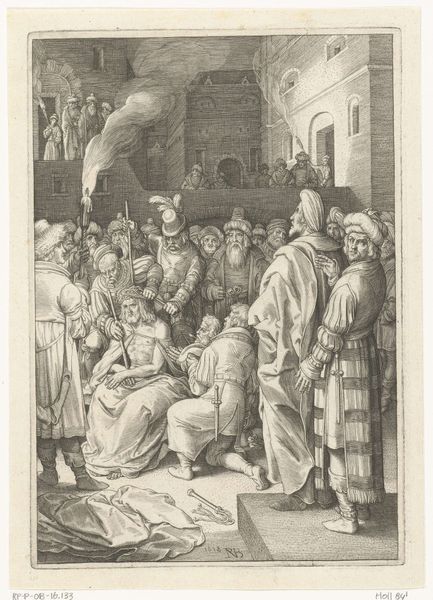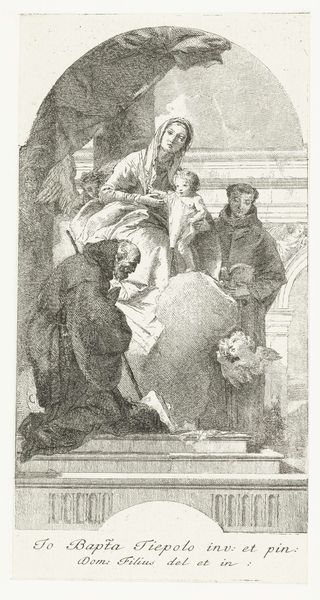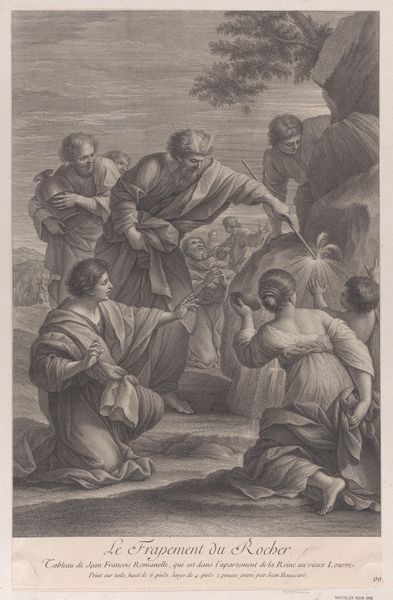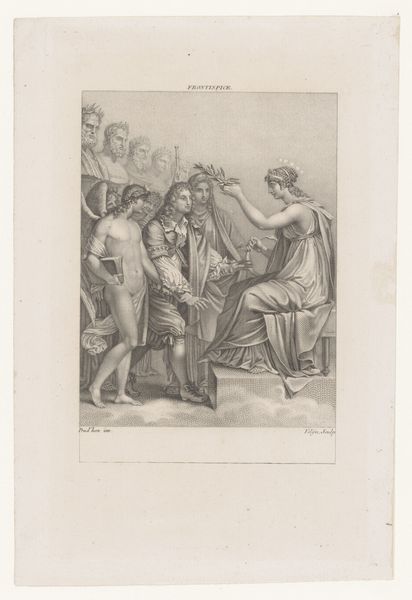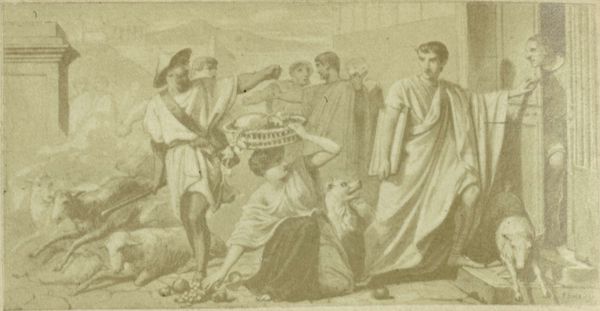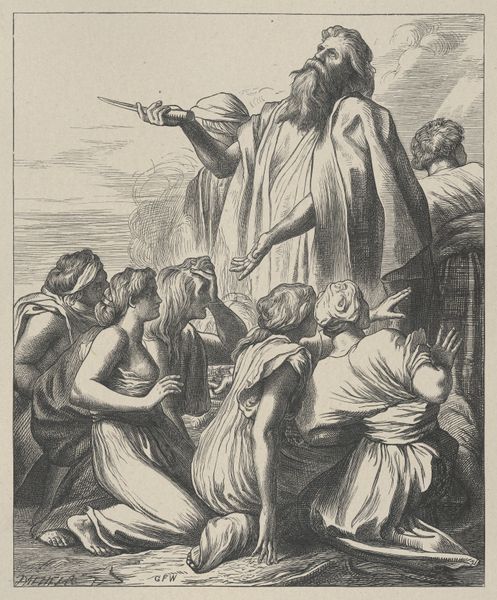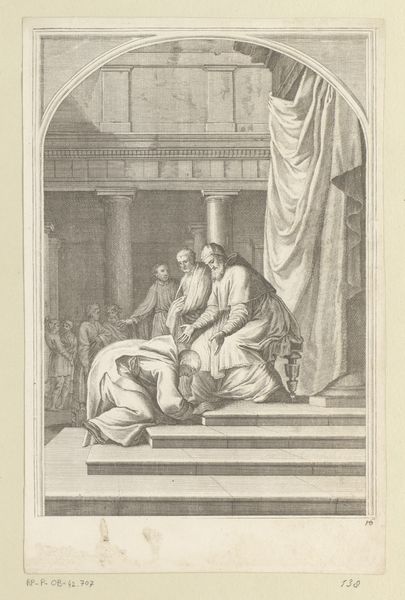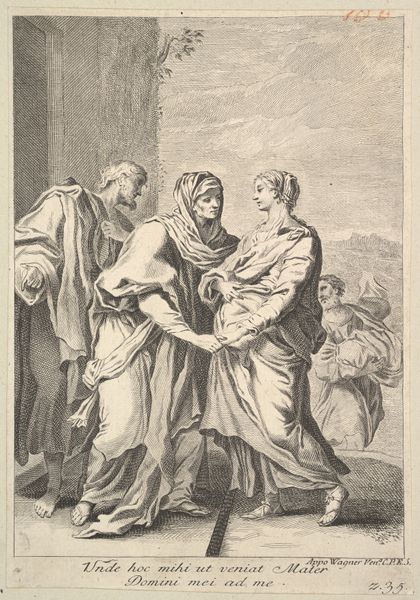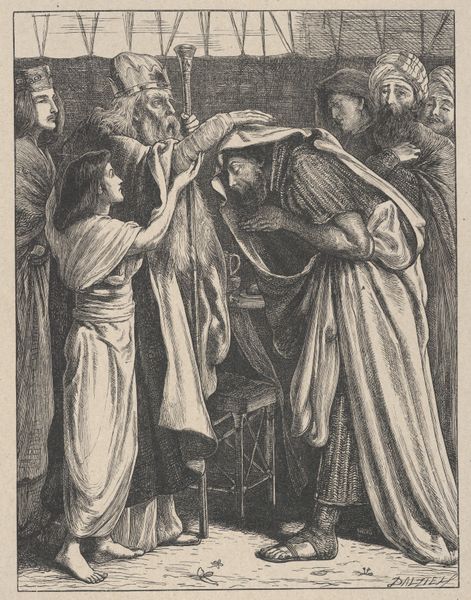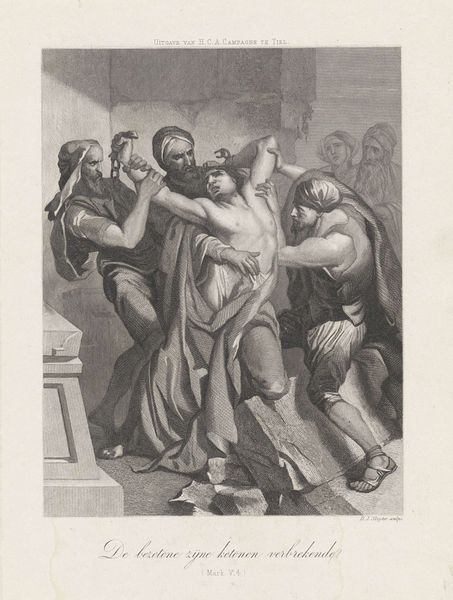
Christus verdrijft de kooplui uit de tempel 1829 - 1879
0:00
0:00
print, engraving
#
narrative-art
# print
#
pencil drawing
#
history-painting
#
engraving
#
realism
Dimensions: height 238 mm, width 171 mm
Copyright: Rijks Museum: Open Domain
Editor: So, this is "Christus verdrijft de kooplui uit de tempel," or "Christ driving the Merchants from the Temple," an engraving made sometime between 1829 and 1879 by Jan Frederik Christiaan Reckleben, held here at the Rijksmuseum. The scene feels so dynamic, with this clear separation between Christ and the chaos he is disrupting. What stands out to you in this work? Curator: For me, it's the question of its public function. Reckleben chose to depict this iconic biblical scene at a time when printmaking was becoming increasingly accessible. How might this imagery have been received? Did it serve as religious instruction, social commentary, or simply as a moral tale accessible to a wide audience? The print, with the publisher information added on the top, gives us a peek at how art was consumed in the emerging public sphere. What do you think the choice of realism brings to the scene? Editor: Well, using realism, wouldn't that bring a sense of immediacy and truth? Almost like making a direct call to action. It gives a glimpse into the potential relationship between political intent and religious authority during the era it was created. Curator: Precisely. The distribution networks for prints like these meant that images – and the ideologies they conveyed – could permeate different levels of society. Thinking about the role of the church and power at this moment is crucial. To add, do you also observe the choice of clothing for these characters, and the potential relationship to what would have been worn then? Editor: That makes a lot of sense. I hadn't considered how the act of distribution also adds meaning to the work itself. It helps connect it to specific beliefs. I see now how Reckleben's engraving, beyond just illustrating a biblical story, also participates in a broader discussion about faith, society, and power. Thanks, that was eye-opening. Curator: Indeed. Analyzing artworks from a historical perspective reveals just how deeply embedded they are within their social contexts. It encourages us to consider art not just as aesthetic objects, but also as agents within larger historical narratives.
Comments
No comments
Be the first to comment and join the conversation on the ultimate creative platform.
